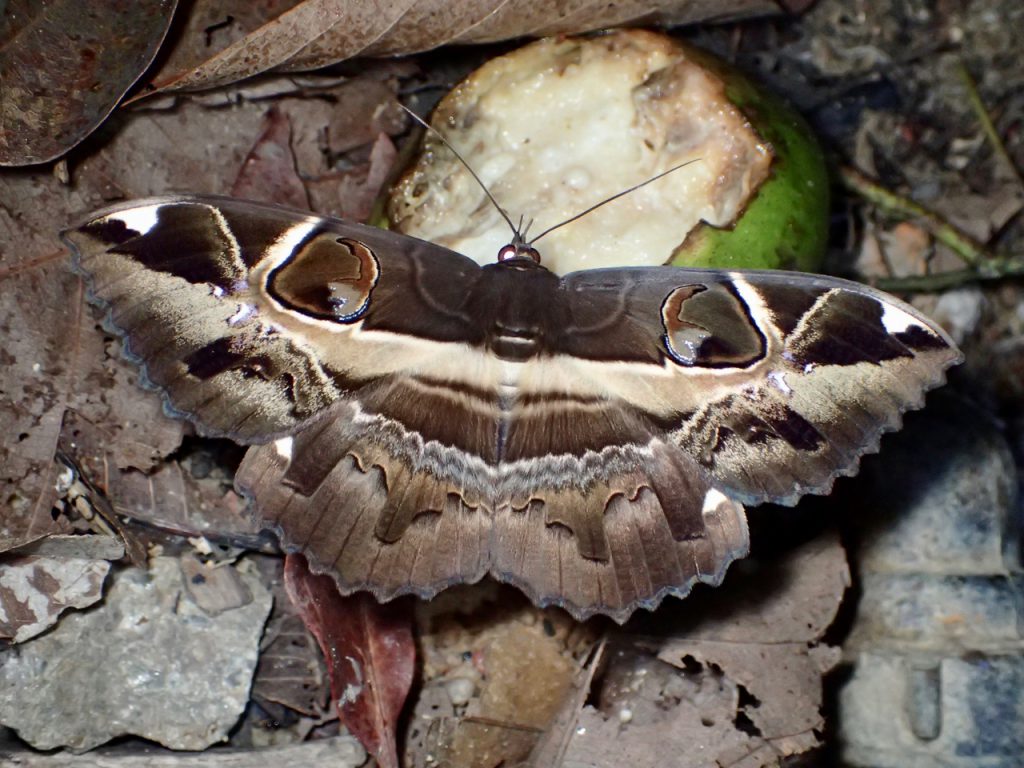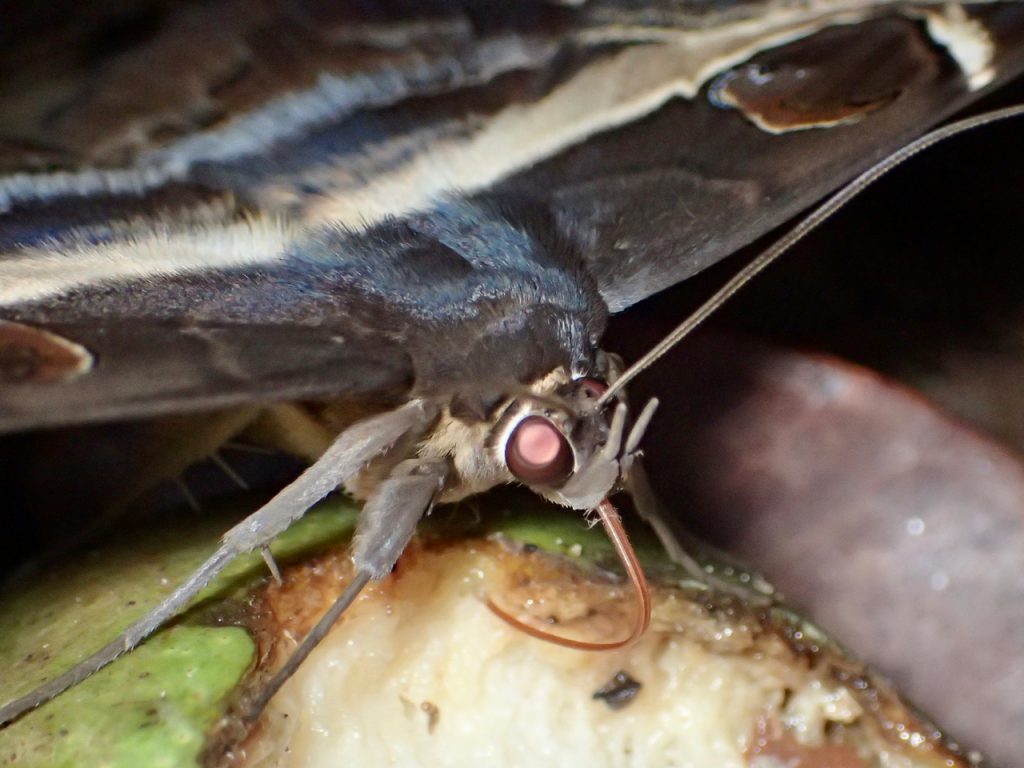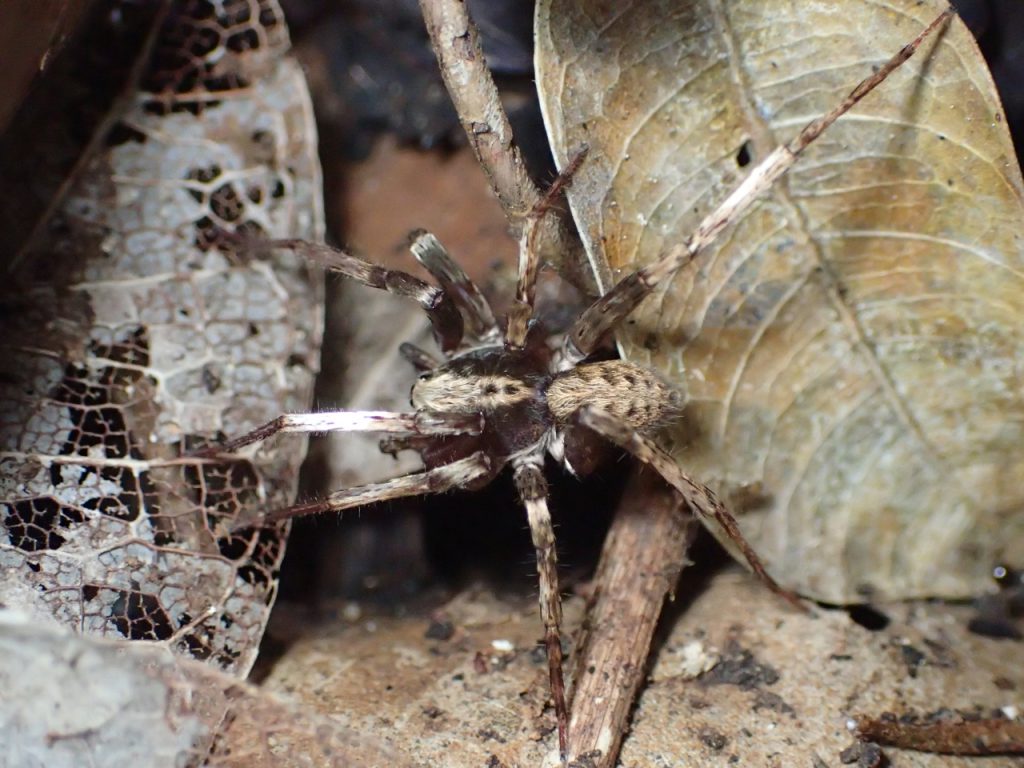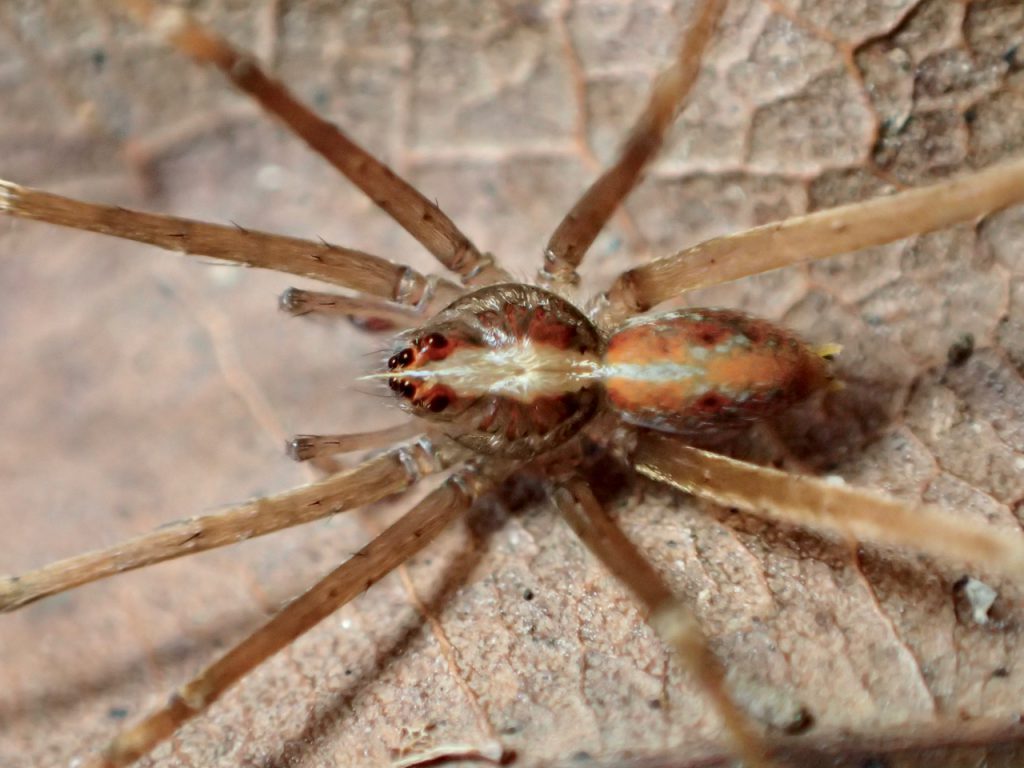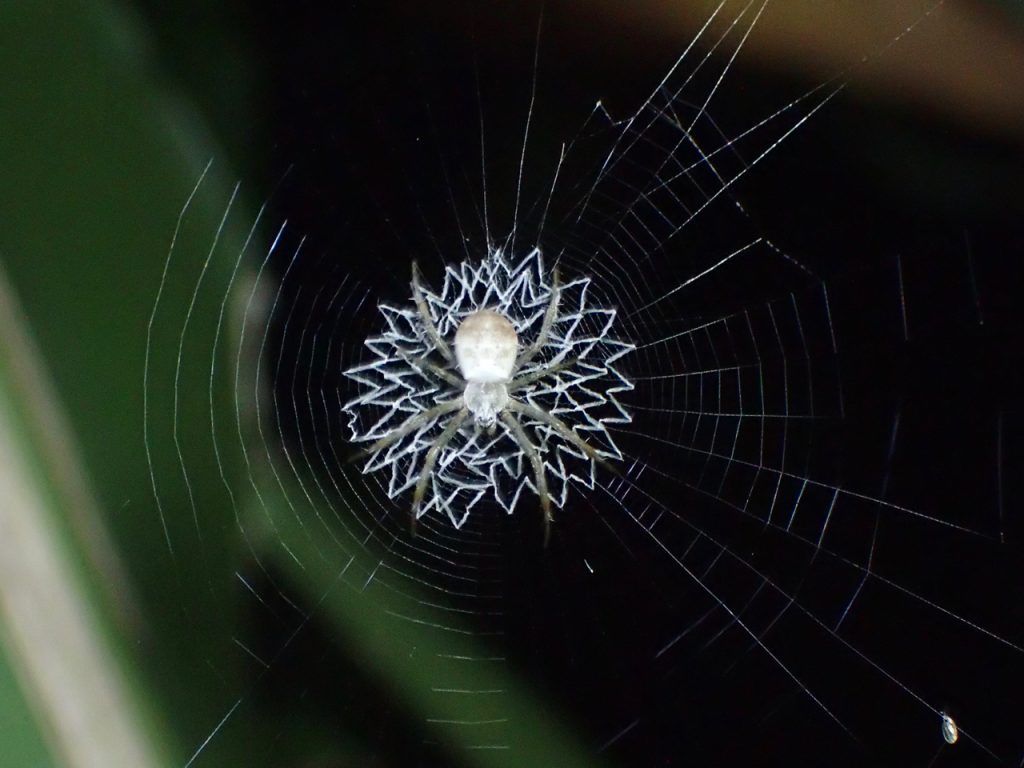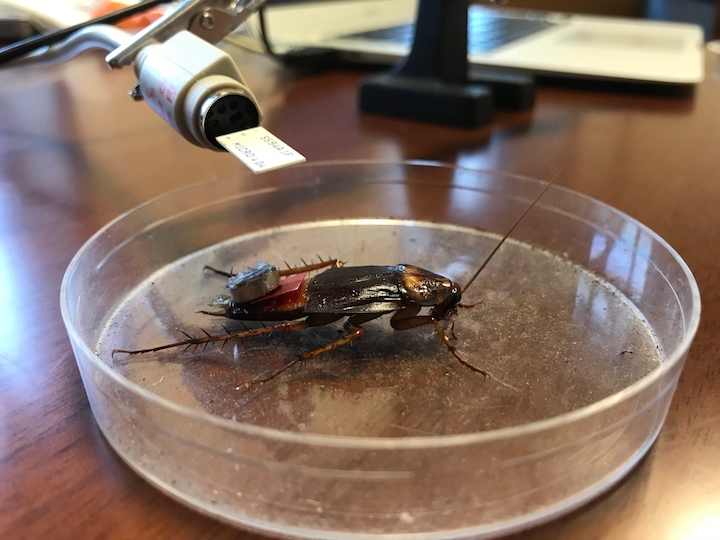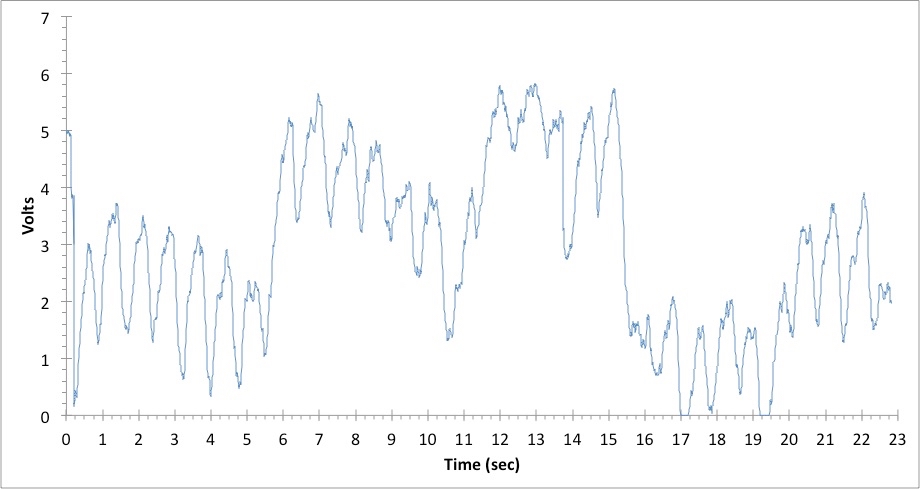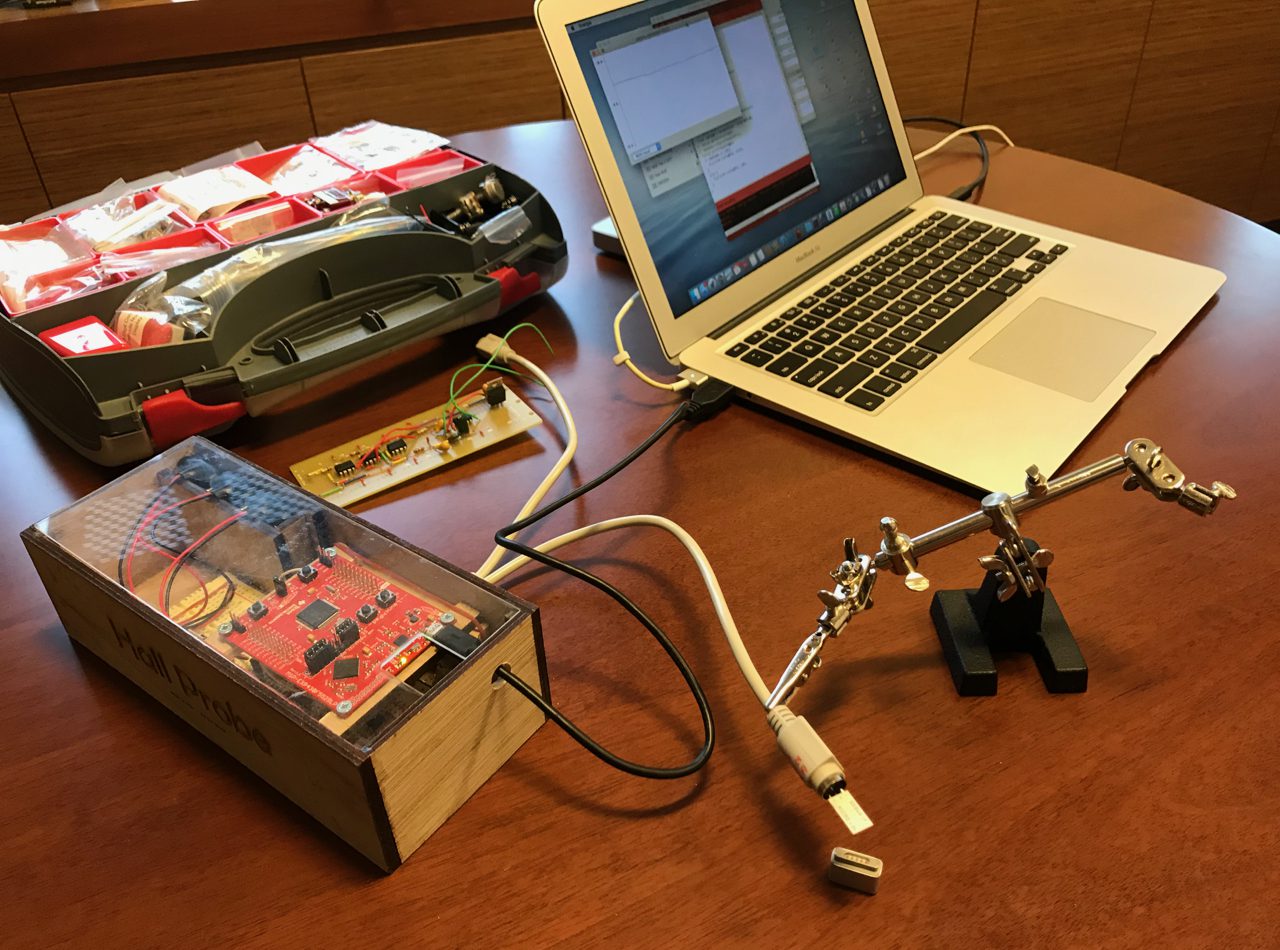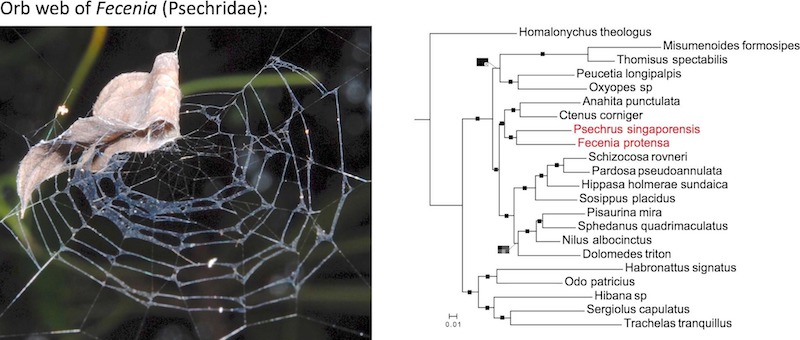Gluing a magnet to the back of a cockroach turned out to be a bigger challenge than expected: the cuticle is slick and moist, the magnet is heavy (so likes to slide off), and all my usual tools are metal and instantly snap to the magnet. In the end, the solution was to first superglue a piece of acetate to the roach, then score the magnet to make it less slick, and finally superglue the magnet to the acetate. Despite the heavy weight of the magnet, and having it somewhat improperly positioned a bit too far towards the posterior, it seems to record the tiny movements produced by cockroach heartbeats, here about 1.3 beats per second.
Hall Effect Instrumentation Amplifier
Thanks to Yale-NUS undergraduate and FabLab aficionado, Daniel Pyone Maung, for building a Hall Effect instrumentation amplifier for the lab following instructions from this old article in Scientific American. We are hoping that the heartbeats of an insect or spider will cause enough movement in an attached magnet to register a signal. This summer, Gena Soh will try to test this device as part of her research internship with us.
Sathesh’s Departure
The origins of the Psechridae
Pleased to see that our phylogenomic tree based on transcriptomes has been published, reporting the result that psechrids are sister group to the ctenids. The author’s share-link is valid for a limited time: https://authors.elsevier.com/a/1Wt5g3m3nMqWpO
Looking for Ctenids
Last night was pleasant weather so I went looking for Ctenus corniger near the central catchment. Only found one juvenile and one mature female. I would love to know where these are most abundant or otherwise reliably found. Here’s a large moth eating some fruit and young Ctenus, Acantheis, and Argiope:
